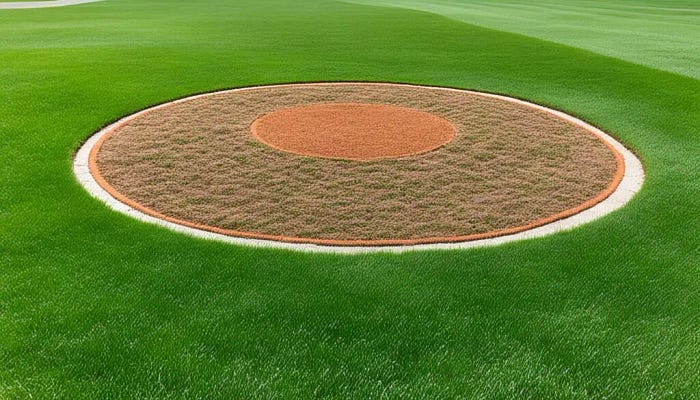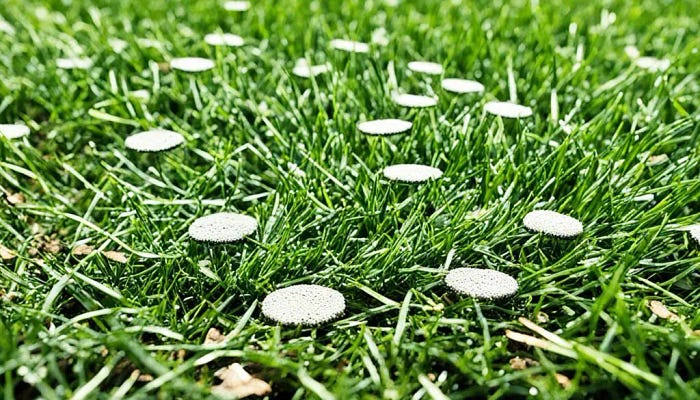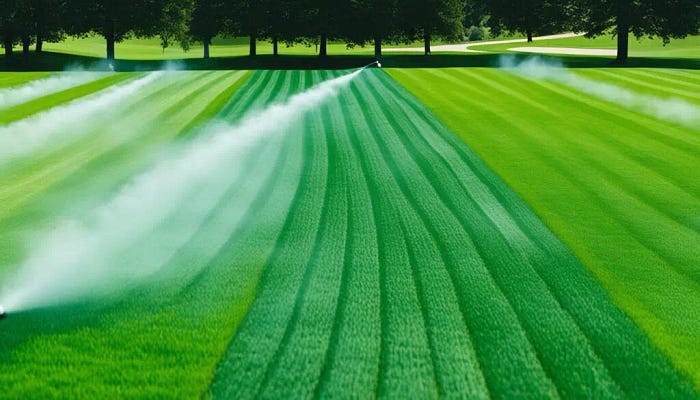9 Common Turfgrass Diseases: Identification and Management Tips
Have you ever seen strange patches of grass in your yard? They might be caused by common turfgrass diseases. But do you know how to spot and fix these problems?
This guide covers 9 common lawn diseases. You’ll learn how to spot them and stop them from getting worse. We’ll explain what causes each disease, the types of grass they impact, and how to treat them. With this knowledge, you can keep your lawn healthy and green.
Introduction to Turfgrass Diseases
Turfgrass diseases are a big problem for many. Homeowners and pros often face them. If not taken care of, these fungal diseases can harm your lawn a lot. It’s key to know about the types of turfgrass diseases and what causes them. This helps manage them well.
Understanding Turfgrass Diseases
Fungi are the main reason behind turfgrass diseases. They infect the grass and cause different kinds of harm. There are over 100 diseases that damage turfgrasses. So, knowing which one is affecting yours is important. You might see signs like circular patches, rings, or spots changing in color or texture.
Importance of Proper Identification and Management
First, you must identify the disease to treat it right. The Compendium of Turfgrass Diseases is a great guide. It has info on 75 diseases and how to spot them. Remember, weather conditions greatly affect how diseases spread. Knowing this is key to protecting your lawn.
Symptoms and Control Measures
You’ll see round, brown patches and maybe a “smoke ring” on fine grass like golf greens. To fight brown patch, fix watering and feeding problems. Mow the grass a bit higher, and try to let the air move through. Sometimes, you will need to use special fungus killing products. If the thatch is too thick, take it out. Forecast models can help know when to use the fungicides.

By knowing what causes brown patch and how to treat it, lawn managers can keep their grass healthy.
“Avoiding prolonged periods of leaf wetness drastically reduces the severity of brown patch.”
Dollar Spot
Dollar Spot is a turfgrass disease caused by the fungus Sclerotinia homoeocarpa. It affects warm- and cool-season grasses like tall fescue and Kentucky bluegrass. This disease is like dry soil, long leaf wetness, and little nitrogen.
Symptoms include round, straw-colored spots a few inches wide that can look like brown patches. On golf greens, they’re the size of a silver dollar. But, on fairways and lawns, they can grow up to 3 inches. In some conditions, these spots merge, killing larger areas of grass.
High temperatures over 90°F slow down dollar spot activity. Yet, in some places, summer disease peaks in the late summer when it’s 60°F to 85°F. The fungus spreads through infected plants and survives cold as mycelium crusts.
For control, fertilize well, water properly, and mow regularly. Also, use the right fungicides. Low-nitrogen grass is more at risk. Keep the grass moist and remove thick thatch to fight the disease. Choosing the right grass type can also help manage dollar spot, especially for bentgrass and Kentucky bluegrass.
Many fungicides can control dollar spots. However, using too many of the same fungicidescan make the fungus resistant. So, rotate fungicides to avoid this problem. Make sure to apply fungicides evenly for the best results against dollar spot.

In conclusion, dollar spot is tough but manageable with good care, the right grass choices, and smart fungicide use. Knowing the disease’s details helps in controlling it. This way, lawns, golf courses, and sports fields can stay healthy.
Pythium
Pythium is a troublesome fungal disease that attacks turfgrass such as annual bluegrass and tall fescue. It thrives when soils are too wet. Some types of Pythium like cooler temperatures, between 32°F and 50°F. Others prefer it warmer, from 70°F to 90°F.
Susceptible Grasses and Conditions
Pythium blight can be really bad for creeping bentgrass and annual bluegrass. It also affects Kentucky bluegrass but with less damage. This disease spreads fast and can ruin your turf. You might notice it starting in low spots where the ground stays wet.
Symptoms and Control Strategies
It shows up as wet, dead patches on your grass. Pythium can kill your lawn in just a few days if not stopped. To fight it, keep your lawn well-drained and not too wet. Don’t use too much nitrogen on your grass and ensure good air flow. Fungicides like Mefenoxam and Cyazofamid work against pyrium. But remember, they should be a last option for home lawns. For the best help, consider a professional lawn care service.
Knowing what grasses and conditions Pythium likes, and using the right strategies, can help a lot. This way, you can keep your lawn healthy and Pythium-free.
Preventive vs. Curative Treatments
Using fungicides before diseases start is a good idea for yearly issues like brown patches. This stops the disease from spreading or getting too severe. But, if the disease is already active, fungicides might need more applications to work well. They can still help in this case, especially when other methods aren’t enough.
Always follow the label when picking and using fungicides. Timing and the right amount matter a lot for how well they work. Changing the types of fungicides used can help avoid the problem of them not working later on. This strategy is critical for their long-term success.

Mixing cultural care and chemical control gives the best result against fungal diseases. A good plan addresses what causes diseases, and uses fungicides wisely when needed.
Conclusion
Turfgrass diseases are tough for both homeowners and pros. But, knowing how to handle them helps keep your lawn green and healthy. Learning about the diseases, what causes them, and how they spread is crucial. This lets you make a good plan to spot, stop, and fight these problems.



Comments
Post a Comment